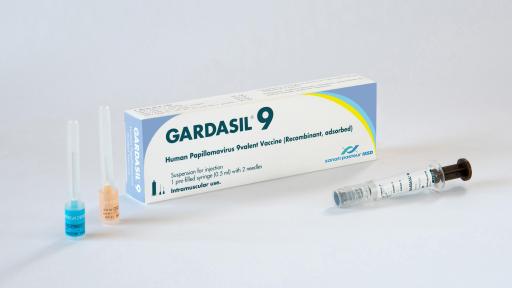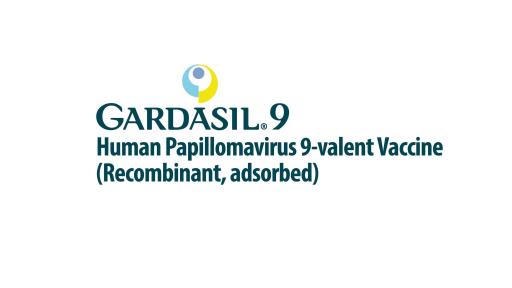GARDASIL®9: New HPV vaccine approved in the European Union
The European Commission grants marketing authorization for GARDASIL 9, the only 9-valent HPV vaccine
Lyon, France – June, 17 2015/PRNewswire - Sanofi Pasteur MSD announced today that the European Commission has granted marketing authorization for GARDASIL 9. GARDASIL 9 is a 9-valent HPV vaccine for active immunization of females and males from the age of 9 years against premalignant lesions and cancers affecting the cervix, vulva, vagina or anus and also against genital warts (Condyloma acuminata) caused by the HPV types covered by the vaccine.
The approval of GARDASIL 9 follows the positive opinion of the European Committee for Medicinal Products for Human Use (CHMP) granted on March 27th 2015.
“We are delighted to receive the EU Commission approval for this important vaccine that provides an extraordinary opportunity to further prevent cancer in women and men throughout Europe", said Dr Jean-Paul Kress, President of Sanofi Pasteur MSD. "This vaccine is a significant step forward for public health; by vaccinating boys and girls we can prevent not only 90% of cervical cancers but also implement effective immunization programs to address other types of HPV related diseases such as anal, vulvar and vaginal cancers for which there is no current systematic screening", he concluded.
GARDASIL 9 includes more HPV types than any currently available HPV vaccine. The seven high-risk HPV types in GARDASIL 9 (HPV 16, 18, 31, 33, 45, 52 and 58) cause approximately 90% of cervical cancer, 90% of HPV related anal cancer and 80% of high-grade cervical lesions (cervical precancers defined as CIN 2, CIN 3 and AIS) worldwide. The two low-risk types, HPV 6 and 11, cause 90% of genital wart cases.1
The marketing authorization is supported by a comprehensive clinical program initiated in 2007; seven trials evaluated more than 15,000 individuals across 30 countries. GARDASIL 9 was shown to be 97% effective in preventing high-grade lesions of the cervix, vagina and vulva caused by the 5 additional oncogenic HPV types (31, 33, 45, 52, 58). In addition, the vaccine was shown to elicit antibody responses against HPV types 6, 11, 16 & 18 that were non-inferior to Gardasil®, the leading HPV vaccine.
GARDASIL 9 will be commercialized in Western European countries by Sanofi Pasteur MSD (a joint venture between MSD and Sanofi Pasteur), in the United States and Canada by Merck, and in other countries (including Eastern Europe) by MSD.
National HPV vaccination programs are now in place throughout Western Europe and in other regions. Through such programs, countries around the world have demonstrated a reduction in HPV prevalence and the burden of cervical disease and genital wartsii,iii. Most importantly, these programs are expected to strongly contribute to the future reduction of cancer caused by HPViv based on real life effectiveness data on cervical disease that has been generated in countries such as Denmarkiv and Australiav,vi.
While national health authorities are now beginning to consider the role of this new vaccine in their programs, vaccination with existing HPV vaccines combined to screening remains the standard to protect the population against cancers caused by HPV. It has been demonstrated that the currently available HPV vaccines protect against the two most prevalent and aggressive HPV types, HPV 16 and 18.
Multimedia Gallery
About GARDASIL®9
GARDASIL 9 is the first and only nonavalent HPV vaccine helping to protect females and males against genital diseases and cancers caused by 9 human papillomavirus types (6, 11, 16, 18, 31, 33, 45, 52, 58) causing approximately 90% of cervical cancer cases and approximately 80% of high-grade cervical lesions (cervical precancers, defined as CIN 2, CIN 3 and AIS) worldwide. These HPV types also cause 85-90% of HPV-related vulvar cancers, 80-85% of HPV-related vaginal cancers and 90-95% of HPV-related anal cancers. HPV types 6 and 11 cause approximately 90% of genital warts cases.
The indication of GARDASIL 9 is based on:
- non-inferior immunogenicity between GARDASIL 9 and Gardasil for HPV Types 6, 11, 16 and
18 in girls and women 9 to 26 years of age; consequently, efficacy for GARDASIL 9 against persistent infection and disease related to HPV Types 6, 11, 16, or 18 can be inferred to be comparable to that of Gardasil, - demonstration of efficacy against persistent infection and disease related to HPV Types 31, 33, 45, 52 and 58 in girls and women 16 to 26 years of age, and
- demonstration of non-inferior immunogenicity against the GARDASIL 9 HPV Types in boys and girls 9 to 15 years of age and men 16 to 26 years of age, compared to girls and women 16 to 26 years of age.
Clinical studies for GARDASIL 9 (7 trials, efficacy and/or immunogenicity, safety) are demonstrating efficacy against the 5 additional HPV types 31, 33, 45, 52, and 58 and against the 4 original HPV Types 6, 11, 16, 18 through immunobridging.
The efficacy data from the pivotal, efficacy, immunogenicity and safety study involving more than 14,000 women aged between 16 and 26 years – P001 – has been published in the New England Journal of Medicine in February 2015vii.The study objectives were to show non-inferior immunogenicity for HPV types 6, 11, 16 and 18 compared to Gardasil; to demonstrate the efficacy on diseases related to HPV types 31, 33, 45, 52 and 58, and to assess vaccine tolerability.
In the per-protocol efficacy (PPE) population, with a mean follow-up of 40 months, GARDASIL 9 was shown to be:
- 96.7% effective in preventing the combined incidence of high-grade cervical, vaginal, vulvar premalignant lesions caused by the 5 additional oncogenic HPV types (31,33,45,52,58),
- 96.3% effective in preventing High-grade cervical epithelial neoplasia, adenocarcinoma in situ and cervical cancer caused by the 5 additional oncogenic HPV types (31,33,45,52,58),
- 96.0% efficacy against six-month persistent HPV infection with HPV types 31, 33, 45, 52, 58 in the per-protocol efficacy population,
- Able to elicit antibody responses against HPV Types 6, 11, 16 & 18 that were non-inferior to Gardasil, with nearly 100% of participants seroconverting to the 9 HPV types 1 month after the 3rd dose.
The vaccine was generally well toleratedvii.
The safety of the 9-valent HPV vaccine has been evaluated in more than 15,000 subjects in the clinical trials.
The most common adverse reactions observed with GARDASIL 9 were injection-site adverse reactions (84.8% of vaccinees within 5 days following any vaccination visit) and headache (13.2% of the vaccinees within 15 days following any vaccination visit). These adverse reactions usually were mild or moderate in intensity.
About Gardasil®
Gardasil, manufactured by Merck (MSD), is the only quadrivalent HPV vaccine helping to protect people from genital diseases and cancers caused by the human papillomavirus Types 6, 11, 16 and 18: cervical cancer, anal cancer, precancerous lesions of the cervix (CIN2/3), precancerous lesions of the anus (AIN 2/3), precancerous lesions of the vulva (VIN2/3) and vaginal (VaIN2/3) and genital warts (Condyloma acuminata).
Data published since Gardasil became available confirm the positive impactii,iii,iv,v,vi of this vaccine on the prevention of genital diseases caused by human papillomavirus Types 6, 11, 16 and 18.
Launched 9 years ago in 2006, Gardasil is Western Europe's leading HPV vaccine with over 33 million doses distributed and approximately 183 million doses distributed worldwide to date.
About Human Papillomavirus (HPV)
Human papillomavirus, also known as HPV, is a family of very common and highly contagious viruses. There are many different types of HPV, of which around 40 HPV types can affect the genital areas of men and women.vii These viruses are transmitted through any kind of sexual contact and can also affect the mouth and throat.viii
HPV is so common that nearly all sexually active people get it at some point in their livesviii,ix. Although some types of HPV can cause external genital warts or anogenital lesions, HPV infections may not present with clinical symptoms. As a result, many people are unaware that they have an HPV infection. viii,x
HPV is associated with a number of different types of cancers. HPV causes almost 100% cases of cervical cancer viii,xi and a substantial proportion of those in the vagina, vulva, anus, penis and oropharynx (the part of the throat between the soft palate and epiglottis).viii,xii,xiii,xiv,xv
Certain HPV types are more likely to cause cancer than others. These are known as high-risk or oncogenic HPVs. The vast majority of HPV-positive cancers in men and women are related to types 16 and 18xvi.
Each year in Europe*, it is estimated that HPV types 16 and 18 cause almost 28,000 cases of anal and cervical cancer.xvi
*26 European countries (EU 27 plus Norway, Iceland and Switzerland, excluding Greece, Hungary, Luxembourg and Romania)
About Sanofi Pasteur MSD http://www.spmsd.com
Sanofi Pasteur MSD is a European joint venture formed between Sanofi Pasteur (the vaccine division of Sanofi) and Merck (known as MSD outside the United States and Canada). Combining innovation and expertise, Sanofi Pasteur MSD is the only European pharmaceutical company dedicated exclusively to the distribution of vaccines. Sanofi Pasteur MSD makes use of the combined expertise resulting from Sanofi Pasteur and Merck’s research to focus on the development of new vaccines in Europe in order to produce the most effective, most acceptable and better tolerated vaccines.
Contact:
Sylvia Martin-Jarrand
Sanofi Pasteur MSD
Tel : +33 4 37 28 40 55
References:
- Hartwig et al. Burden of HPV related cancers and precancerous lesions in women and men in Europe: potential additional benefit of a 9-valent compared to the 4-valent vaccine in Europe. IPV congress 2014, Seattle. Poster presentation.
- Mariani L, Vici P, Suligoi B, Checcucci-Lisi G, Drury R. Early Direct and Indirect Impact of Quadrivalent HPV (4HPV) Vaccine on Genital Warts: a Systematic Review. Adv Ther. 2015;32(1):10-30
- Herrero R, Gonzalez P, Markowitz LE. Present status of human papillomavirus vaccine development and implementation. Lancet Oncol 2015; 16:e206-16.
- Keating & McCormack. Quadrivalent human papillomavirus (types 6, 11, 16, 18) recombinant vaccine (Gardasil): a guide to its use in the EU. Drugs Ther Perspect (2015) 31:1–8
- Baldur-Felskov B et al. Early impact of human papillomavirus vaccination on cervical neoplasia--nationwide follow-up of young Danish women. J Natl Cancer Inst 2014. Feb 19,2014
- Brotherton JML et al. Human papillomavirus vaccination is changing the epidemiology of high-grade cervical lesions in Australia. Cancer Causes & Control 2015; DOI 10.1007/s10552-015-0568-6
- Joura E. et al. A 9-Valent HPV Vaccine against Infection and Intraepithelial Neoplasia in Women. N Engl J Med 2015;372:711-23
-
Centers for Disease Control and Prevention. Genital HPV infection – fact sheet.
http://www.cdc.gov/std/hpv/stdfact-hpv.htm. Last accessed 4 June 2015. - Weaver B. Epidemiology and Natural History of Genital Human Papillomavirus Infection. J Am Osteopath Assoc 2006;106(3 Suppl 1):S2-8.
- M Rodriguez. Is Increasing HPV Infection Awareness Promoting Increased Vaccine, Compliance? The Internet Journal of Advanced Nursing Practice 2009, Volume 11, Number 1. http://ispub.com/IJANP/11/1/13612. Last accessed 9 January 2014.
- Walboomers JM and Meijer CJ. Do HPV-negative cervical carcinomas exist? J Pathol 1997;181(3):253-4.
- De Vuyst H et al. Prevalence and type distribution of human papillomavirus in carcinoma and intraepithelial neoplasia of the vulva, vagina and anus: a metaanalysis.Int J Cancer 2009;124(7):1626-36.
- Miralles-Guri C et al. Human papillomavirus prevalence and type distribution in penile carcinoma. J Clin Pathol 2009;62(10):870-8.
- Kreimer AR et al. Human Papillomavirus Types in Head and Neck Squamous Cell Carcinomas Worldwide: A Systematic Review. Cancer Epidemiol Biomarkers Prev 2005;14(2):467-475.
- Chung CH et al. Epidemiology of oral human papillomavirus infection. Oral Oncol (2013), http://dx.doi.org/10.1016/j.oraloncology.2013.09.003
- Hartwig et al. Estimation of the epidemiological burden of human papillomavirusrelated cancers and non-malignant diseases in men in Europe: a review. BMC Cancer 2012;12:30.
Related Links






